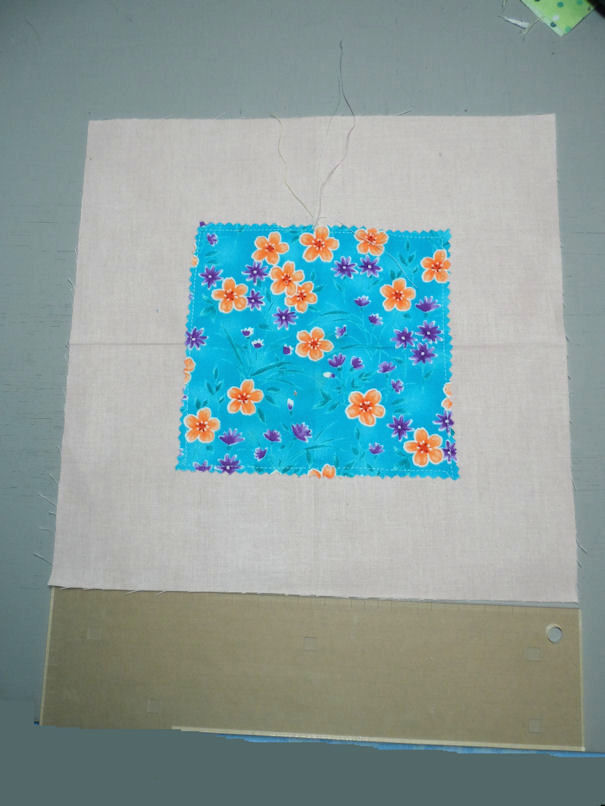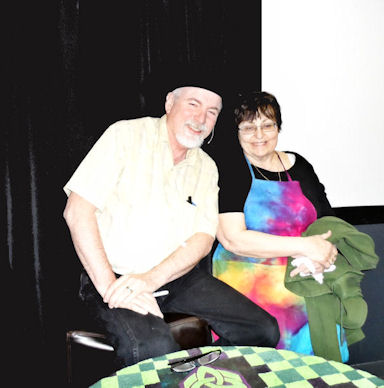WHAT IS MODERN QUILTING?
For a while now I have been fascinated by the Modern Quilt Movement. I first stumbled upon the modern style of quilt patterns on the blog of my quilting podcasting buddies. I would follow links on their blogs and started seeing modern quilts. As I read the blogs, I would comment or communicate with the authors. I found I was often attracted to the patterns and colors of the quilts. One day I stumbled upon the online MODERN QUILT GUILD (MQG)
http://themodernquiltguild.com
http://themodernquiltguild.wordpress.com
The MQG was organizing members on line. Their rationale was that there were not enough members who lived close enough to each other. Little by little the members in the same area started connecting and they organized brick and mortar guilds in the area where they lived. Sometimes these guilds were off shoots of larger traditional guilds but more often they were independent groups. Like traditional guild they evolved according to the group’s need. Some are working groups where they learn techniques and work on projects. Other groups organize themselves the same as traditional guilds. The majority have show and tell as part of their meeting. The groups tend to be filled with younger women who have just started quilting, but anyone who shared the same aesthetics and made modern quilts were welcome.
The main difference from a traditional guild is the aesthetics of the quilts. The groups belong to the main MQG, they continue to communicate and organize on line. Blogs, Facebook, PINTERST and Flicker Groups connect the MQG community. The growth of social media has spurred the growth of the MODERN QUILT MOVEMENT. Often members do not even live in the same state ( I am active in one group but am an on line member in several others.)
The MQG is evolving and growing, earlier this year they had their second QUILT- CON. QUILT CON in the own words from their blog:
QuiltCon is the inaugural international conference and show by and for The Modern Quilt Guild. The first modern quilting event of its kind, Quilt-Con features top modern quilting instructors and will attract attendees from around the world. It includes a juried modern quilt show with cash prizes, vendors, lectures, workshops from top modern quilters, and more.
If you want to learn more about MODERN QUILTING you can check out the lecture series on Craftsy. You do have to register on the website but you can sign up for several classes and the QUILT CON LECTURE SERIES for free. You do need a high speed internet connection to watch the programs they do not work on dial up. But if you can stream a TV show you should be able to steam these lectures.
http://www.craftsy.com
http://www.craftsy.com/classes/quilting
http://www.craftsy.com/class/quiltcon-lecture-series-2013/194
What are the aesthetics of MODERN QUILTING?
I did extensive research in what is considered MODERN QUILTING. Just like traditional quilting for every modern quilter there is a different definition and an application of those definitions. Modern quilters have differing levels of skills from the total newbie just learning to thread a machine to experience quilters who could win ribbons in any show. Modern Quilters also have a growing group of quilters who publish patterns and books. I am sure you have been seeing more books, patterns. I do not think the MODERN QUILTERS are rejecting traditional quilts they are just finding their own voices and what fits in their lives. I say bring them on let us welcome them to the club of quilting and enjoy their endeavors.
http://www.flickr.com/groups/freshmodernquilts
http://www.dsquilts.com/quilts.asp?PageID=1
http://www.flickr.com/search/?w=all&q=wonky+quilt&m=text
Modern quilting also reflects the change in ways quilters gather (online), share (flickr/blogs), and shop (again, online). Sure, traditional quilters do these things too, but with the speed of the internet, ideas light up and take off in an instant. Someone posts it on a blog, everyone sees it, and by next week, 20 people have made one already (more if someone creates a flickr pool for them). You don’t have to wait for magazines and quilt shows to see what’s new.
As voiced by a recent essay winner in the magazine GENERATION Q:
http://generationqmagazine.com/2011/09/notions-winner-of-the-%E2%80%98what-is-modern-quilting-%E2%80%98essay-contest
http://generationqmagazine.com/what-is-modern-quilting-essay-contest/#3
Modern quilts display an effective use of the principles of design: movement, unity, harmony, variety, balance, contrast, proportion and rhythm. Most interesting is that most modern quilters employ these principles organically, without any formal training or structure—they simply create what is in their hearts and minds of quilter. Modern quilting alongside ancient and indigenous art and designs expresses the inborn drive of humans to create beauty.
Characteristics of MODERN QUILTING:
Base their quilt structure and blocks on design principals found in architecture and art classes.
The defining design principles in modern quilting are rhythm and movement.
Designs exhibit influences of modern art and architecture
Functional /utilitarian quilts used in the home, not show quilts, not art quilts
Simple, minimalist design using geometric shapes
One rule in modern quilting, it would be that there are no rules.
Expression of the time in which we live
Original form not always a recreation of traditional blocks or quilts; it is a blazing of new trails.
Reflect the individual personality and personal style of the quilter and it also reflects the current aesthetic of the day.
Asymmetry in quilt design
Frequent use improvisational piecing
Alternate grid work is often a part of modern quilt compositions
Bold colors, on-trend color combinations and graphic prints and use of complementary color schemes
Modern quilters tend to collect and use MODERN QUILT / GRAPHIC FABRIC DESIGNERS… Amy Butler, Tulula Pink
Increased use of solid colors, including grey and white as neutrals
Less emphasis on block repetition
Increased use of negative space
Unusual block settings and block arrangement
Decrease use of borders, more edge to edge patterns
Pieced backings / dual quilts
Increased use of solid fabrics
The use of diverse fabrics (keeping in mind the way the fabrics different in their wearing and use.) is often found in the same quilt. Using vintage and recycled fabrics in different ways is common. I think this is an off shoot of inheriting stashes and thrift shopping. Mixing fabrics types can frequently be found in a MODERN QUILT PROJECTs.
Block aesthetics:
Reinterpreted traditional blocks
Unconventional block structures
SIZE of blocks and patches tend to be larger than traditional quilts (16 to 20 inches are common in Modern Quilting patterns.
Graphic / geometric block designs. Fabrics are showcased not the blocks.
Use of precuts and fabric bundles / kits is often used by the new Modern Quilters but they to branch off as their skill level and quest for personal creativity grows.
The piecing could be improvisational and liberated, or it could be very exact and measured, following a pattern or creating your own.
Using a traditional quilt block and updating the blocks :
using modern fabrics
modifying the block arrangement
modifying the scale of the block
Use of technology in MODERN QUILTING …Beyond standard quilting tools
 ORIENTAL QUILT and Shikoku stitching
ORIENTAL QUILT and Shikoku stitching  hand quilting traditional pattern.. pumpkin seed and double cross hatch
hand quilting traditional pattern.. pumpkin seed and double cross hatch Star Center
Star Center Dear Jane
Dear Jane  close up of the quilting
close up of the quilting








 BACK: seams pressed open
BACK: seams pressed open  BLOCK A: four patches mixed and matched then sewn together.
BLOCK A: four patches mixed and matched then sewn together.


 Finished Blocks
Finished Blocks
 OAKLAND COUNTY QUILT GUILD RAFFLE QUILT RAFFLED OFF AT THE SEMINAR
OAKLAND COUNTY QUILT GUILD RAFFLE QUILT RAFFLED OFF AT THE SEMINAR THE QUILT SHOWS BLOCK OF THE MONTH QUILT designed by Sue Nickles and Pat Holly
THE QUILT SHOWS BLOCK OF THE MONTH QUILT designed by Sue Nickles and Pat Holly Close up of the FREE MOTION QUILTING
Close up of the FREE MOTION QUILTING ALEX ANDERSON QUILT
ALEX ANDERSON QUILT ALEX ANDERSON QUILT
ALEX ANDERSON QUILT ALEX ANDERSON QUILT
ALEX ANDERSON QUILT ALEX ANDERSON QUILT
ALEX ANDERSON QUILT This quilt was made by ALEX from gift blocks made by the speakers on THE QUILT SHOW
This quilt was made by ALEX from gift blocks made by the speakers on THE QUILT SHOW THE LAST BOW OF THE NIGHT
THE LAST BOW OF THE NIGHT WHOLE CLOTH PHOTO QUILT
WHOLE CLOTH PHOTO QUILT ONE SEAM FLYING GEESE
ONE SEAM FLYING GEESE Ricky’s newest pattern
Ricky’s newest pattern RHAPSODY, center medallion
RHAPSODY, center medallion THIS is a LIBBY LEHMAN QUILT
THIS is a LIBBY LEHMAN QUILT Ricky and his father made this RHAPSODY QUILT
Ricky and his father made this RHAPSODY QUILT KALEIDOSCOPE
KALEIDOSCOPE BLUE KALEIDOSCOPE
BLUE KALEIDOSCOPE
 Shantel Tulip a caveman piecing technique shown during the seminar. He also has a DVD that teaches this technique is greater detail for people like me who have no memory and need constant reminding/ prompting on how to do a technique.
Shantel Tulip a caveman piecing technique shown during the seminar. He also has a DVD that teaches this technique is greater detail for people like me who have no memory and need constant reminding/ prompting on how to do a technique. LADY RAGS (AKA NONNIE) with RICKY TIMS
LADY RAGS (AKA NONNIE) with RICKY TIMS 
 MIRROR IMAGE of APPLIQUE
MIRROR IMAGE of APPLIQUE PURCHASE from the BERNINA booth at the Seminar
PURCHASE from the BERNINA booth at the Seminar